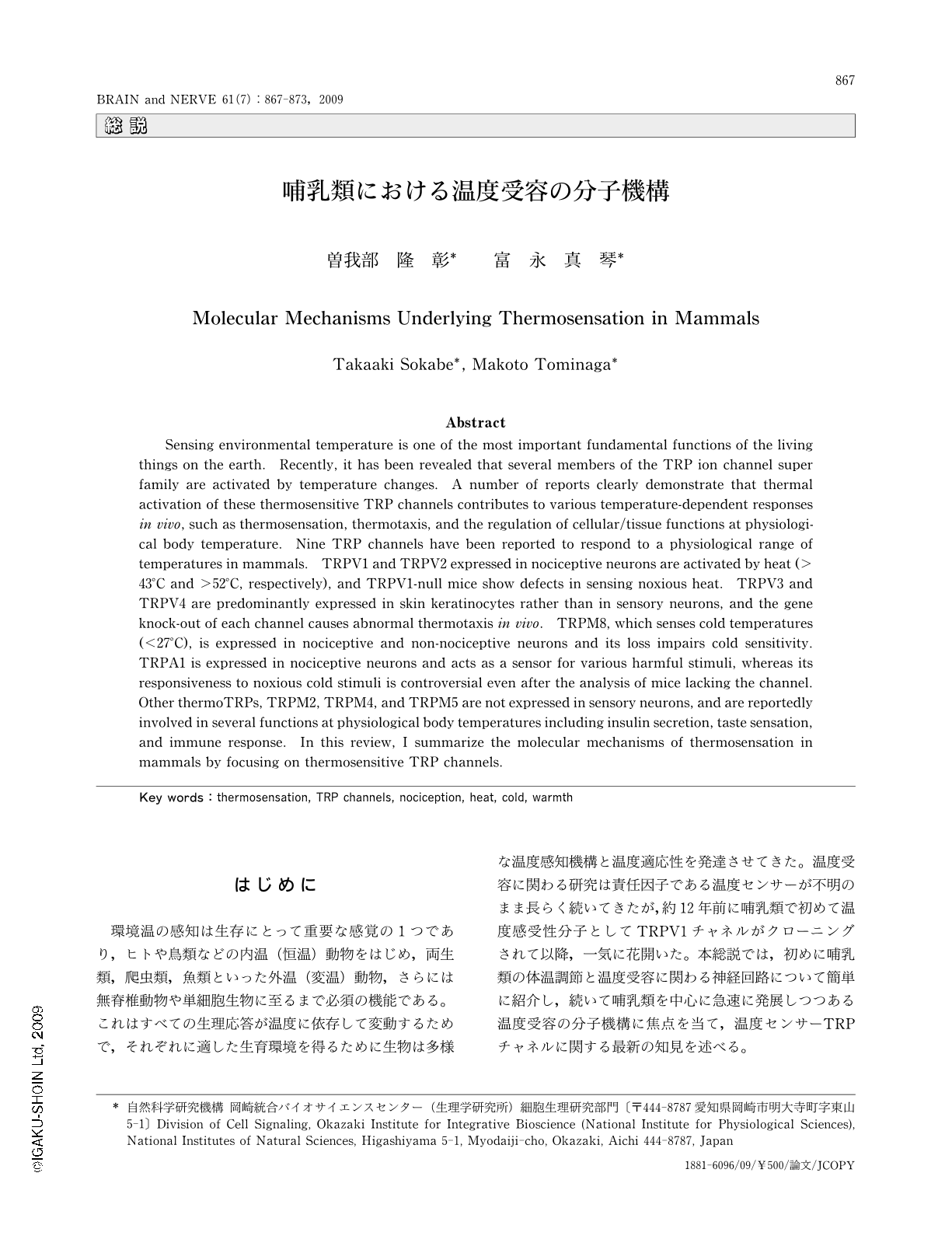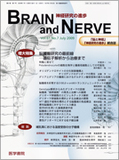Japanese
English
- 有料閲覧
- Abstract 文献概要
- 1ページ目 Look Inside
- 参考文献 Reference
はじめに
環境温の感知は生存にとって重要な感覚の1つであり,ヒトや鳥類などの内温(恒温)動物をはじめ,両生類,爬虫類,魚類といった外温(変温)動物,さらには無脊椎動物や単細胞生物に至るまで必須の機能である。これはすべての生理応答が温度に依存して変動するためで,それぞれに適した生育環境を得るために生物は多様な温度感知機構と温度適応性を発達させてきた。温度受容に関わる研究は責任因子である温度センサーが不明のまま長らく続いてきたが,約12年前に哺乳類で初めて温度感受性分子としてTRPV1チャネルがクローニングされて以降,一気に花開いた。本総説では,初めに哺乳類の体温調節と温度受容に関わる神経回路について簡単に紹介し,続いて哺乳類を中心に急速に発展しつつある温度受容の分子機構に焦点を当て,温度センサーTRPチャネルに関する最新の知見を述べる。
Abstract
Sensing environmental temperature is one of the most important fundamental functions of the living things on the earth. Recently,it has been revealed that several members of the TRP ion channel super family are activated by temperature changes. A number of reports clearly demonstrate that thermal activation of these thermosensitive TRP channels contributes to various temperature-dependent responses in vivo,such as thermosensation,thermotaxis,and the regulation of cellular/tissue functions at physiological body temperature. Nine TRP channels have been reported to respond to a physiological range of temperatures in mammals. TRPV1 and TRPV2 expressed in nociceptive neurons are activated by heat (>43℃ and >52℃,respectively),and TRPV1-null mice show defects in sensing noxious heat. TRPV3 and TRPV4 are predominantly expressed in skin keratinocytes rather than in sensory neurons,and the gene knock-out of each channel causes abnormal thermotaxis in vivo. TRPM8,which senses cold temperatures (<27℃),is expressed in nociceptive and non-nociceptive neurons and its loss impairs cold sensitivity. TRPA1 is expressed in nociceptive neurons and acts as a sensor for various harmful stimuli,whereas its responsiveness to noxious cold stimuli is controversial even after the analysis of mice lacking the channel. Other thermoTRPs,TRPM2,TRPM4,and TRPM5 are not expressed in sensory neurons,and are reportedly involved in several functions at physiological body temperatures including insulin secretion,taste sensation,and immune response. In this review,I summarize the molecular mechanisms of thermosensation in mammals by focusing on thermosensitive TRP channels.

Copyright © 2009, Igaku-Shoin Ltd. All rights reserved.


